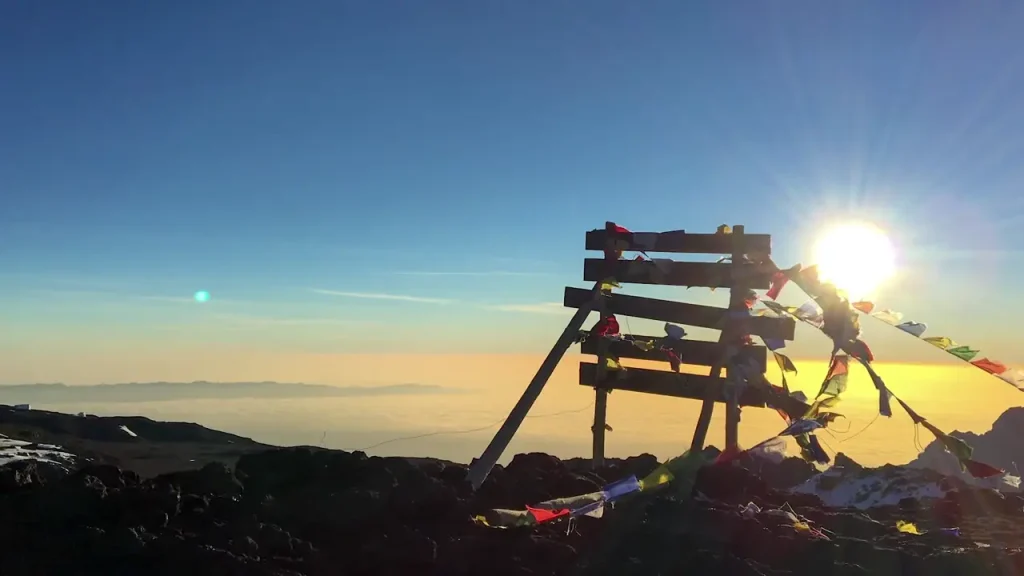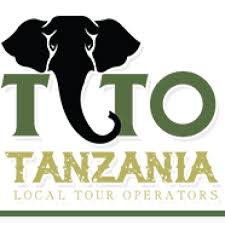Embark on a Thrilling Kilimanjaro Group Climb in 2024!
Embark on a thrilling Kilimanjaro group climb in 2024 and conquer Africa’s highest peak! Whether you’re a solo traveler, a couple, or anyone eager to make new friends, these climbs offer a unique and unforgettable experience. Perfect for all levels of adventurers, you’ll share this incredible journey with like-minded enthusiasts, making it even more memorable.
With various routes to choose from, such as the Machame, Lemosho, and Northern Circuit, you can select the ideal path that suits your spirit of adventure. Each route offers something different, from stunning views to challenging terrain, ensuring an exciting experience for every participant.
Group sizes typically range from 2 to 12 people, ensuring a personalized and friendly atmosphere throughout your climb. Whether you’re traveling solo or with others, you’ll find camaraderie along the way, creating lifelong memories.
One of the best features of joining a Kilimanjaro group climb is the flexibility. Group climbs are organized daily throughout the year, with guaranteed departures and no extra costs. You can easily select your preferred dates, and booking is simple—whether you plan in advance or decide last minute, it’s all part of the adventure.
So gear up and get ready for a once-in-a-lifetime journey. You’ll soak in breathtaking views, share the thrill of reaching the summit, and create unforgettable memories on your Kilimanjaro group climb in 2024!
Overview of Group Climbs

Kilimanjaro group climb offers a unique blend of camaraderie and adventure, making it an appealing choice for those tackling Mount Kilimanjaro. The social and supportive environment is ideal for both beginners and seasoned climbers, ensuring everyone feels comfortable and motivated.
With experienced guides leading the way, a Kilimanjaro group climb guarantees safety and valuable local insights, enriching the entire experience. The shared journey creates a sense of unity, helping participants push through challenging sections with the support of like-minded adventurers.
One of the key advantages of a Kilimanjaro group climb is its cost-effectiveness. Shared resources and logistics significantly reduce individual expenses, making the adventure more affordable for everyone involved.
Groups are typically organized by experience level, ensuring that each climber has a suitable challenge. This structured approach helps participants prepare both mentally and physically for the trek.
Many travel agencies also offer additional perks, such as equipment rental discounts, adding further value to the Kilimanjaro group climb experience. Whether you’re seeking new friendships or tackling the mountain’s challenges, a group climb is the perfect way to reach the summit of Africa’s highest peak.
Available Routes for Kilimanjaro
Mount Kilimanjaro offers several routes, each providing unique experiences for climbers. The Marangu Route, known as the ‘Coca-Cola’ route, is the only one with hut accommodations, making it a popular choice for those seeking comfort. In contrast, the Machame Route, or ‘Whiskey’ route, is famous for its breathtaking scenery. Lemosho Route provides a longer trek, which is beneficial for acclimatization.
For those desiring a quieter journey, the Rongai Route approaches from the north and is less crowded. The Northern Circuit is the longest option, offering ample time for acclimatization and exploration. However, the Shira Route starts at a high altitude, posing acclimatization challenges for some.
For experienced climbers, the steep and direct Umbwe Route presents a demanding adventure. When deciding which route to take, consider factors such as your fitness level, experience, and the scenery you wish to see. Guides can offer recommendations based on individual preferences and goals. Each route varies in difficulty, duration, and views, ensuring a diverse range of experiences.
| Route Name | Description |
|---|---|
| Marangu Route | Known as the ‘Coca-Cola’ route, it is the only one with hut accommodations. |
| Machame Route | Also called the ‘Whiskey’ route, popular for its scenic beauty. |
| Lemosho Route | Offers a longer journey, which helps with acclimatization. |
| Rongai Route | Approaches from the north and is less trafficked, offering a quieter trek. |
| Northern Circuit | The longest route, providing ample time for acclimatization and exploration. |
| Shira Route | Has a high starting point, which may pose acclimatization challenges for some. |
| Umbwe Route | Steep and direct, recommended for experienced climbers seeking a challenge. |
Benefits of Joining a Group Climb

Joining a group climb can offer numerous advantages, making it an appealing option for aspiring adventurers. One of the primary benefits is cost-effectiveness, as group discounts often make the climb more affordable than going solo. Additionally, sharing the experience with fellow climbers can lead to lasting friendships, providing a sense of camaraderie and community that enhances the journey.
Group climbs are typically led by professional guides, which increases safety and improves the chances of successfully reaching the summit. These guides are equipped with the knowledge and expertise to handle challenging situations, ensuring peace of mind for all participants. Furthermore, climbing with a group means sharing emotional support, especially during the more demanding parts of the trek, making the journey more enjoyable and less daunting.
Logistical concerns are minimized in organized group climbs, reducing stress for individual climbers. With pre-planned itineraries, transportation, and meals often included, participants can focus more on the adventure itself. Moreover, the shared knowledge and tips from more experienced climbers can be invaluable, offering insights and strategies that might not be available when climbing alone.
Finally, the sharing of equipment and resources can lighten individual loads and expenses. This cooperative approach not only makes the climb more manageable but also fosters a team spirit, enhancing the overall experience. Joining a group climb is not just about reaching the top but also about enjoying the journey and creating memories with others.
- Group discounts can make the climb more affordable compared to solo trips.
- Shared experiences with fellow climbers can lead to lasting friendships.
- Group climbs often include professional guides who enhance safety and success rates.
- Climbing in a group can provide emotional support during difficult parts of the trek.
- Organized groups often handle logistics, reducing stress for individual climbers.
- Participants can benefit from the shared knowledge and tips of more experienced climbers.
- Group climbs can provide a sense of community and camaraderie.
- Shared equipment and resources can lighten individual loads and expenses.
- Pre-planned itineraries ensure a well-structured and organized climb.
- Group climbs may offer additional services like transportation and meals.
Flexible Booking Options for Climbers
When planning your Kilimanjaro adventure in 2024, flexibility is key. Whether you prefer a small, intimate group or a larger, more social experience, there are options for every climber. Operators often provide customizable itineraries to fit your schedule and preferences, making it easier to plan your journey. For those concerned about costs, many offer flexible payment plans to help spread out the expenses. If you’re feeling spontaneous, last-minute bookings might be available, allowing you to join a climb on short notice.
Accommodations range from basic to luxurious, ensuring comfort levels that suit every traveler. Additionally, some packages offer optional add-ons like safari tours or relaxing beach stays in Zanzibar. You can choose from different levels of support, whether you want a fully guided experience or prefer to go self-guided.
Consider the variety of routes and durations available to match your fitness level and time constraints. Plus, early birds or large groups may benefit from special discounts. To safeguard your adventure, insurance options are available to cover unexpected cancellations or emergencies. With all these flexible options, your Kilimanjaro climb can be as unique as you are.
Best Climbing Seasons for Kilimanjaro
The best times to embark on a Kilimanjaro climb are from January to March and June to October. During these months, the weather is more favorable for trekking, making the experience more enjoyable and increasing the chances of a successful summit. January to March is ideal for those who prefer warmer temperatures and less crowded trails. Although it is still chilly at higher altitudes, the lower sections of the mountain are more comfortable to hike through. On the other hand, June to October is the peak climbing season due to the dry conditions and clear views from the summit, offering breathtaking vistas across the African landscape.
While the rainy seasons of April-May and November-December see fewer climbers, they present additional challenges such as slippery trails and unpredictable weather. These months might appeal to adventurers seeking solitude and don’t mind the extra difficulty. Regardless of when you choose to climb, be prepared for cold temperatures and possible snow as you approach the summit. The weather can change rapidly, so having the right gear is crucial.
To make the most of your experience, it’s wise to plan and book your trip in advance during peak seasons to ensure availability. Different times of the year also offer varying scenic experiences, with changes in wildlife and flora. Guides are an invaluable resource, helping you decide the best time to climb based on personal preferences and interests.
Frequently Asked Questions
1. How difficult is it to climb Mount Kilimanjaro?
Climbing Mount Kilimanjaro is challenging, but with proper preparation and determination, many people can reach the summit. It’s important to be in good physical shape and to acclimatize to the altitude.
2. What should I pack for a Kilimanjaro climbing trip?
You’ll need warm clothing, good hiking boots, a sleeping bag, and gear like a headlamp, water bottle, and trekking poles. It’s also essential to pack layers for different weather conditions.
3. How many days does the Kilimanjaro climb take?
The climb usually takes about 5 to 9 days, depending on the route you choose and your pace. Longer climbs offer more time to adjust to the altitude and increase the chances of reaching the summit.
4. What routes are available to climb Mount Kilimanjaro?
There are several routes, including the Marangu, Machame, Rongai, Lemosho, and Northern Circuit, among others. Each offers different scenery, difficulty levels, and durations.
5. Do I need a guide to climb Kilimanjaro?
Looking to climb Mount Kilimanjaro in 2025? Joining a Kilimanjaro group climb offers a social, supportive, and cost-effective way to conquer the mountain. With experienced guides and shared experiences, your adventure will be enhanced every step of the way. Park regulations require climbers to have a registered guide, ensuring safety, assistance with your gear, and valuable knowledge about the mountain.
Choose from various routes like the scenic Machame or the quieter Rongai, each offering unique challenges and breathtaking sceneries. Whether you’re a first-time climber or an experienced mountaineer, there’s a Kilimanjaro group climb route for you. You’ll experience the thrill of reaching the summit with others, making the journey even more memorable.
Enjoy flexible booking options, customizable itineraries, and varied accommodation levels that suit your preferences. Additionally, take advantage of perks like discounts on climbing gear, making your climb even more affordable. The best times to join a Kilimanjaro group climb are from January to March and June to October, when the weather is ideal and the routes are most accessible.
Whether you’re climbing for the challenge, the scenery, or the camaraderie, a Kilimanjaro group climb is the ultimate way to experience Africa’s highest peak. Secure your spot early for a memorable adventure! For the best group climbs and more, trust Framat Adventure to guide you on your journey to the top of Mount Kilimanjaro.






